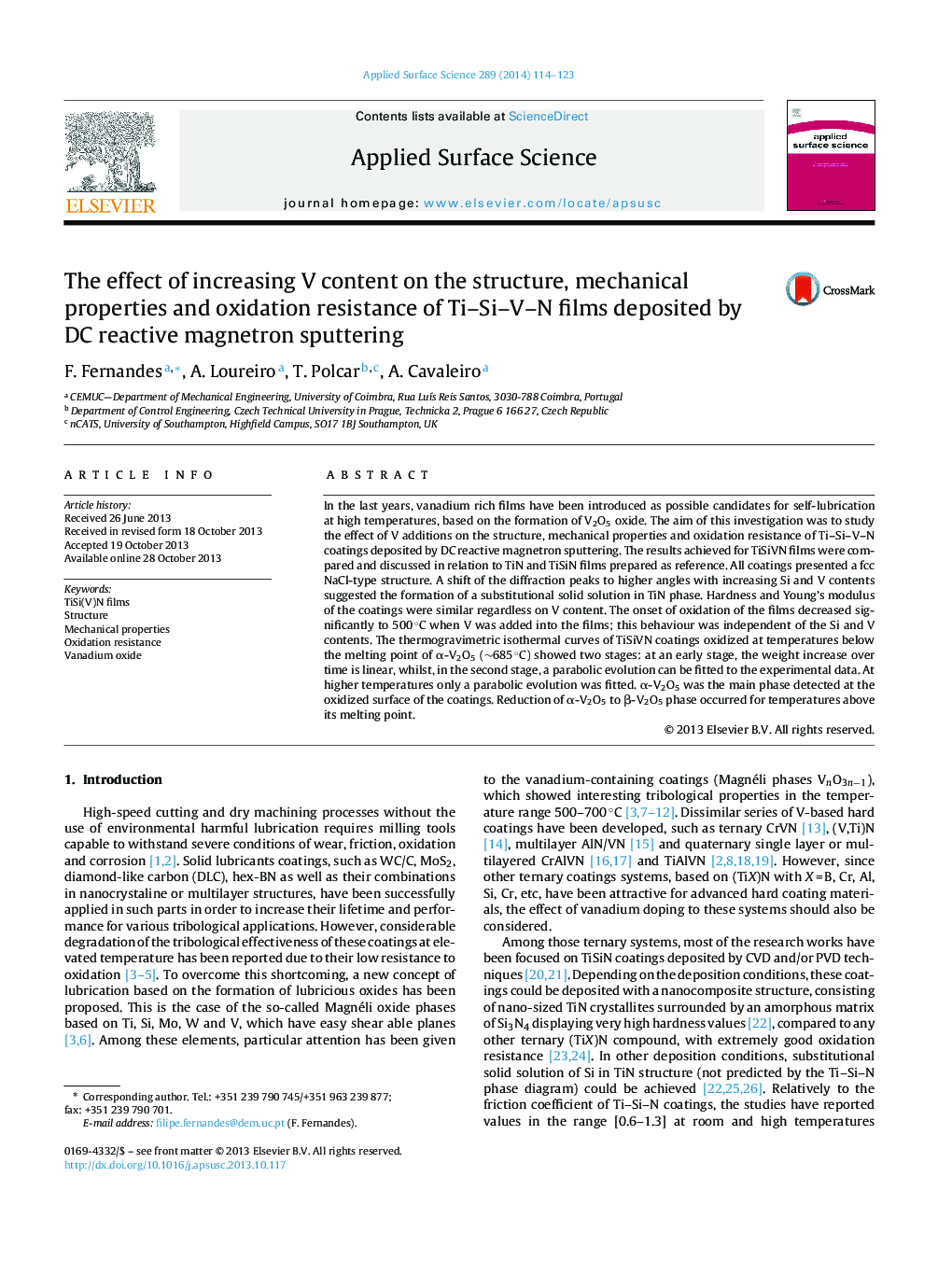| Article ID | Journal | Published Year | Pages | File Type |
|---|---|---|---|---|
| 5358959 | Applied Surface Science | 2014 | 10 Pages |
Abstract
In the last years, vanadium rich films have been introduced as possible candidates for self-lubrication at high temperatures, based on the formation of V2O5 oxide. The aim of this investigation was to study the effect of V additions on the structure, mechanical properties and oxidation resistance of Ti-Si-V-N coatings deposited by DC reactive magnetron sputtering. The results achieved for TiSiVN films were compared and discussed in relation to TiN and TiSiN films prepared as reference. All coatings presented a fcc NaCl-type structure. A shift of the diffraction peaks to higher angles with increasing Si and V contents suggested the formation of a substitutional solid solution in TiN phase. Hardness and Young's modulus of the coatings were similar regardless on V content. The onset of oxidation of the films decreased significantly to 500 °C when V was added into the films; this behaviour was independent of the Si and V contents. The thermogravimetric isothermal curves of TiSiVN coatings oxidized at temperatures below the melting point of α-V2O5 (â¼685 °C) showed two stages: at an early stage, the weight increase over time is linear, whilst, in the second stage, a parabolic evolution can be fitted to the experimental data. At higher temperatures only a parabolic evolution was fitted. α-V2O5 was the main phase detected at the oxidized surface of the coatings. Reduction of α-V2O5 to β-V2O5 phase occurred for temperatures above its melting point.
Related Topics
Physical Sciences and Engineering
Chemistry
Physical and Theoretical Chemistry
Authors
F. Fernandes, A. Loureiro, T. Polcar, A. Cavaleiro,
